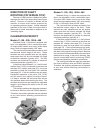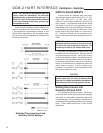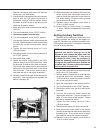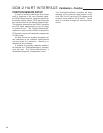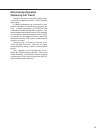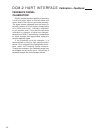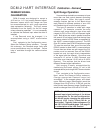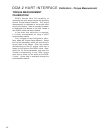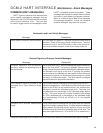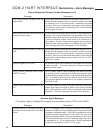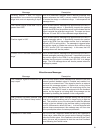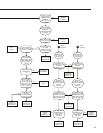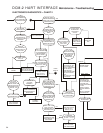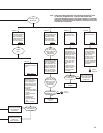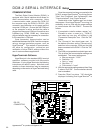
59
DCM-2 HART INTERFACE Maintenance - Alarm Messages
COMMON HART
®
MESSAGES
HART
®
protocol maintains both standard and
device specific informational messages that are
displayed on the 275/375 Handheld Communicator
when various conditions occur. They can also
be used to trigger alarms and messages in other
HART
®
compatible monitoring systems. These
messages alert the user to various alarm conditions
and make it much easier to diagnose problems.
Below is a table of typical Beck drive messages
and message sequences. It does not include all
possible messages, only the most common.
Handswitch and Limit Switch Messages
Message
Description
“Motor power is blocked, check switches”
This message will appear if a condition prevents current flow to
the motor. Some of the most common conditions are: The drive
Handswitch is put in the STOP position; either of the drive over-
travel limit switches are open; or the motor control triacs fail.
Demand Signal and Process Variable Messages
Message
Description
“Process applied to the non-primary
variable is outside the operating limits of
the field device”
“The Demand Signal is outside of the
intended limits (see Demand Setup
menu)”
“Demand out of accurate measurement
range”
This is a standard HART
®
-defined message that appears whenever
one of the three HART
®
non-primary variables (Demand signal,
Torque, Temperature) are outside their design or calibrated ranges.
The Demand input signal to the drive is typically the problem
source; however, the message can also appear if either the torque
measurement (optional) or temperature measurement is outside
the design or calibrated ranges. The Beck specific messages
below provide more descriptive information.
This is a Beck-specific message that can appear after the HART
®
-
defined message above. It specifically pinpoints the Demand input
signal to the DCM-2 as the problem source, and indicates that
the signal is outside the calibrated range limits. The lower limit
is configurable as a percentage of the calibrated range (default
is -5%). The upper range is the highest readable input voltage
(5.5 VDC) expressed as a percentage of the calibrated range
(e.g., approximately 112% for a 4–20 mA* or 1–5 V dc standard
input range).
This is a Beck-specific message that can appear after the “Demand
signal out of range” message above. It further defines the demand
signal problem by indicating that the signal is not only out of the
calibrated range, but also out of the design range of the drive. The
lower and upper limits are 0.1 V dc and 5.55 V dc respectively.*
*Note that current input DCM-2 boards utilize a 250 Ohm input resistor to convert the current signal to voltage.



